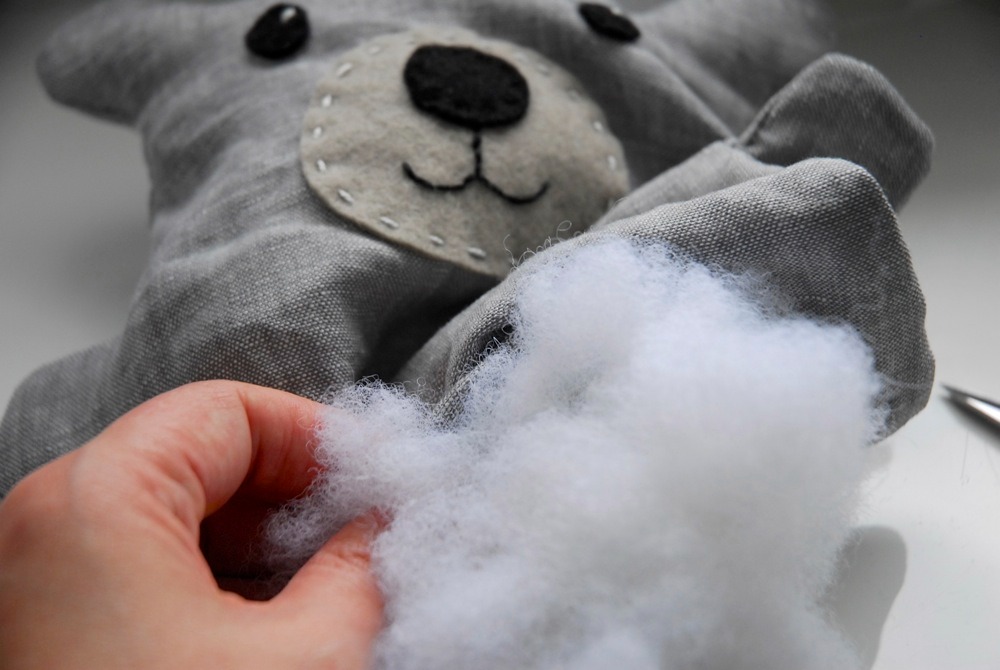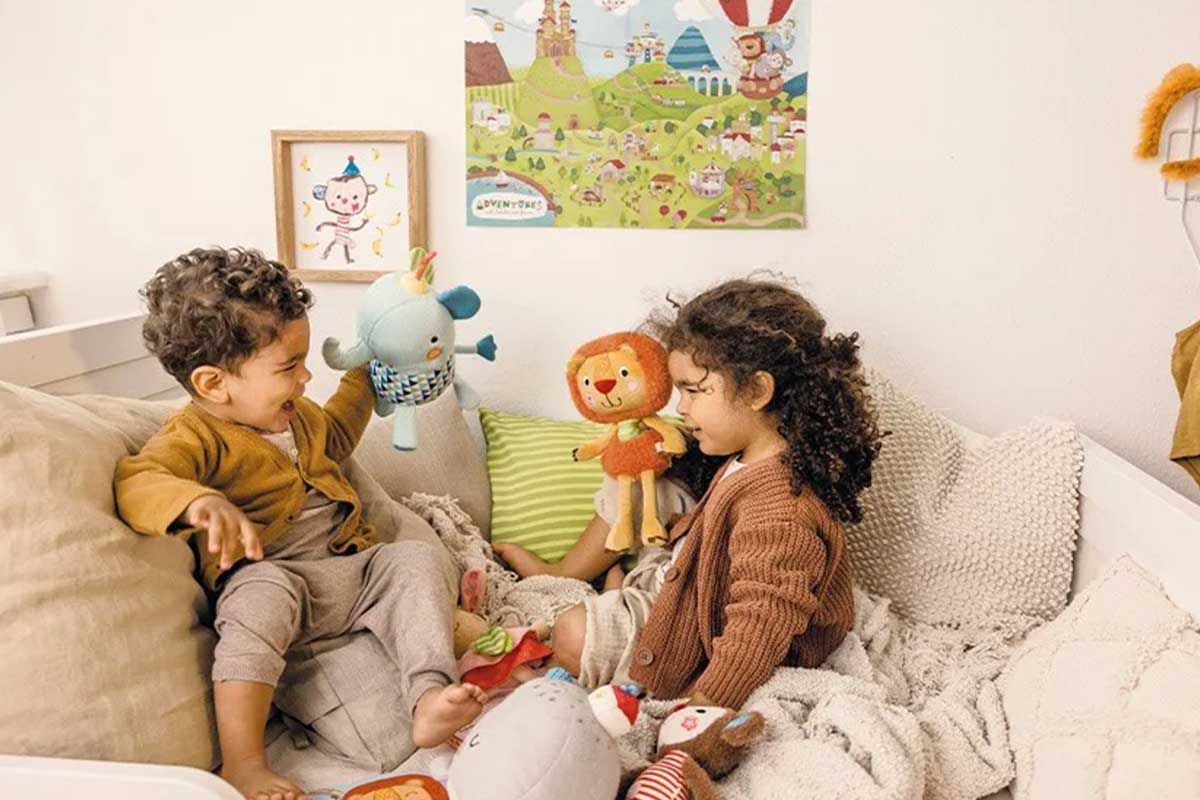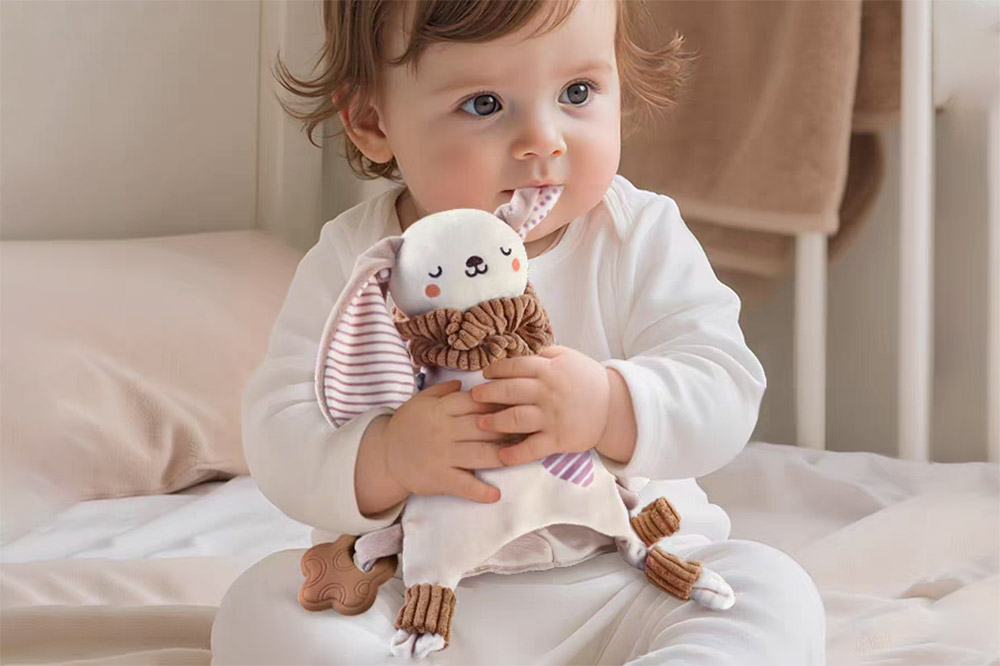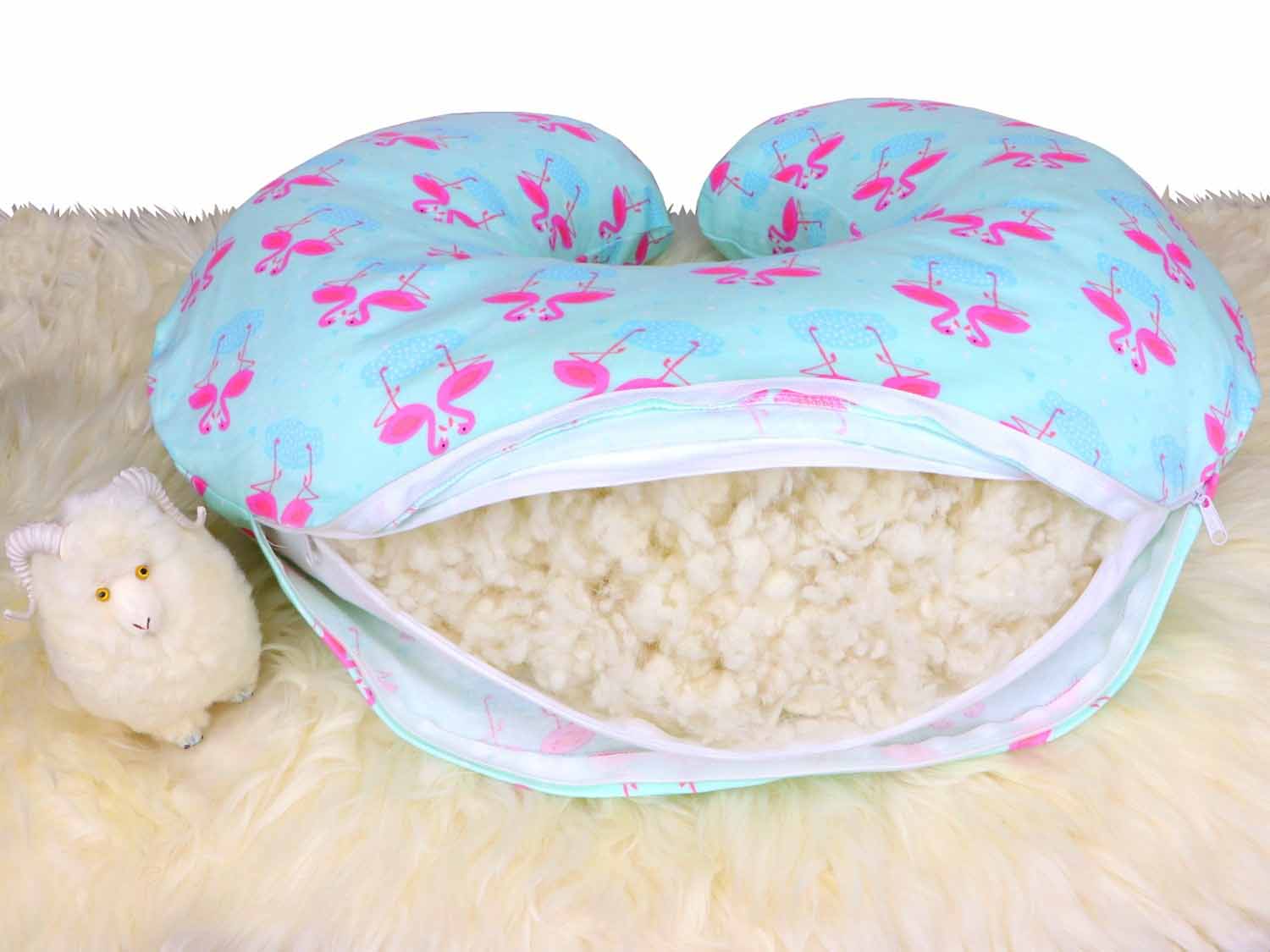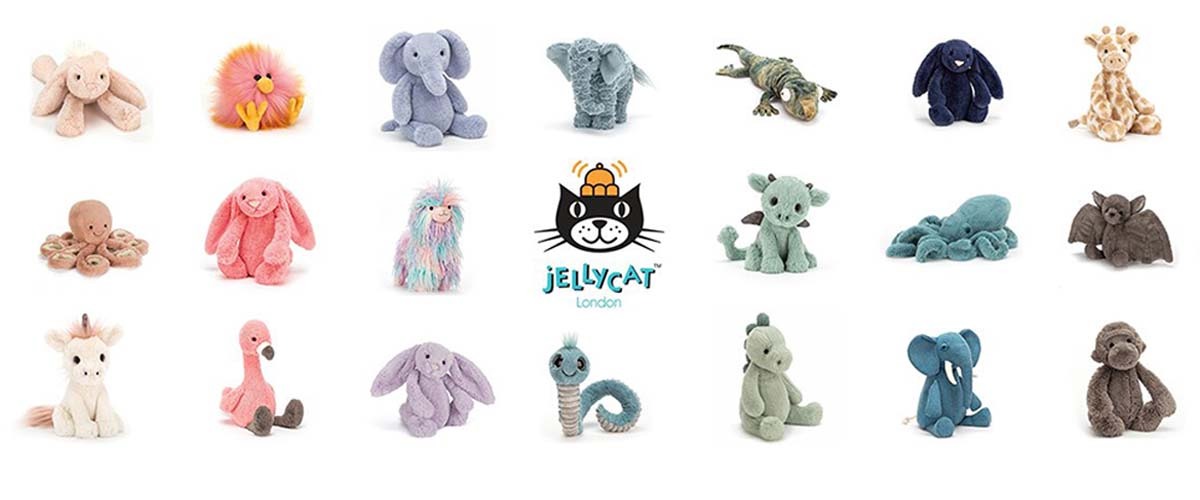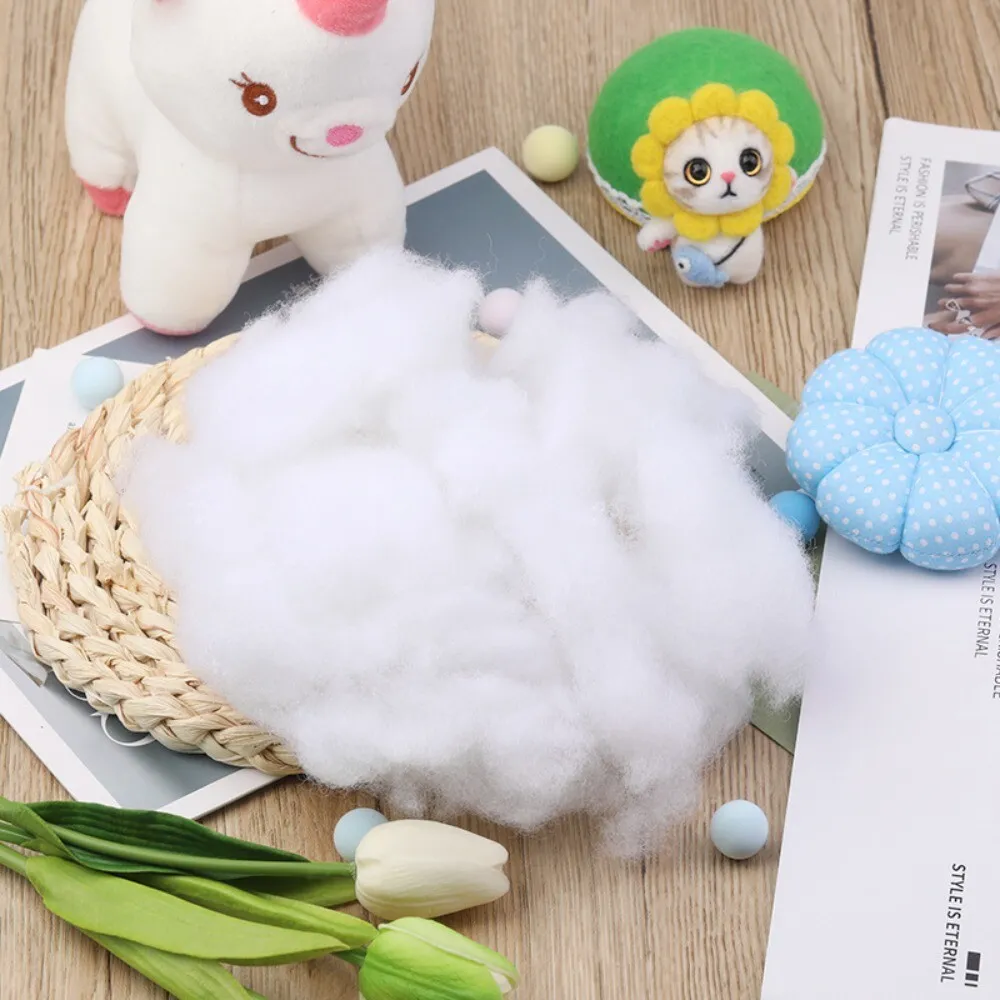The filling inside a stuffed toy decides more than just its softness. It affects safety, durability, comfort, and even market positioning. While outer fabrics create first impressions, the inner stuffing shapes how the toy feels, performs, and complies with safety standards.
This guide explores the most common stuffing materials, their pros and cons, eco-friendly alternatives, and the key factors buyers should consider when sourcing plush toys for global markets.
What Are the Standard Fillings Commonly Used in Stuffed Toys?

Most stuffed toys use a small group of proven materials that balance cost, softness, and compliance. These include:
- Polyester Fiberfill (Polyfill) – the most widely used, light, fluffy, and washable.
- Cotton – natural, breathable, eco-friendly but costlier.
- Foam – offers structure and bounce, used in cushions and larger plush.
- Wool – natural and warm, but less common in mass-market toys.
Each option has unique advantages. Factories choose based on target market, safety requirements, and buyer preferences.
Standard Fillings Overview
| Filling Type | Key Benefit | Common Application |
|---|---|---|
| Polyester Fiberfill | Lightweight, hypoallergenic | Mass-market plush, baby toys |
| Cotton | Natural, breathable | Eco plush, premium toys |
| Foam | Firmness, structure | Cushions, large plush animals |
| Wool | Warmth, natural texture | Specialty and artisan plush |
How Does Polyester Fiberfill Compare to Cotton, Foam, and Wool Stuffing?

Polyester fiberfill dominates global plush toy production. It is inexpensive, fluffy, easy to wash, and hypoallergenic. Compared to other fillings:
- Cotton is eco-friendly but heavier and more expensive. It also tends to clump after washing.
- Foam provides resilience and shape retention but feels less soft for cuddling.
- Wool offers warmth and natural qualities but is unsuitable for humid environments and less consistent for mass production.
For most buyers, polyester fiberfill provides the best balance of performance, safety, and cost efficiency. However, eco-conscious markets may prefer cotton or wool, despite higher costs.
Comparison of Common Fillings
| Material | Softness | Durability | Cost | Washability | Market Fit |
|---|---|---|---|---|---|
| Polyester Fiberfill | High | High | Low | Machine-safe | Mass retail, baby products |
| Cotton | Medium | Medium | Medium | Limited | Eco, premium collections |
| Foam | Medium | High | Medium | Limited | Structured plush, cushions |
| Wool | Medium | Medium | High | Poor | Niche artisan plush |
What Specialty Fillings (Beads, Microbeads, Memory Foam) Are Used in Plush Toy Design?

Beyond the basics, manufacturers use specialty fillings to create unique textures, weight, or sensory effects. These include:
- Plastic Beads: Add weight and stability, often placed in feet or hands to help plush toys sit upright.
- Microbeads: Tiny beads that create a sand-like texture, used in stress-relief or sensory toys.
- Memory Foam: Provides slow-recovery cushioning, ideal for pillows and premium plush toys.
Specialty fillings allow brands to differentiate their products. Weighted plush toys, for example, are increasingly popular for therapeutic use.
Specialty Fillings in Plush Toys
| Filling Type | Benefit | Example Product | Buyer Note |
|---|---|---|---|
| Plastic Beads | Weighted, stable | Weighted plush, collectibles | Must be secured in inner pouches |
| Microbeads | Unique sensory texture | Stress-relief plush, bean bags | Not suitable for infants |
| Memory Foam | Slow-recovery comfort | Plush pillows, premium toys | Higher cost, premium segment |
Are Eco-Friendly or Recycled Fill Materials Suitable for Stuffed Toys?

Yes. Eco-conscious buyers are increasingly demanding sustainable fillings. Two of the most popular options are:
- RPET Fiber: Recycled polyester made from plastic bottles. It feels just like virgin polyester but has a lower environmental footprint.
- Organic Cotton: Chemical-free, hypoallergenic, and trusted by parents of infants.
Emerging alternatives include bamboo fiber and soybean fiber, both plant-based and biodegradable. While costs are higher, eco fillings help brands position themselves as sustainable and appeal to premium markets.
Eco-Friendly Stuffing Materials
| Material | Key Benefit | Market Appeal | Cost Impact |
|---|---|---|---|
| RPET Fiber | Recycled, sustainable, soft | Eco-conscious global buyers | 10–15% higher |
| Organic Cotton | Natural, chemical-free | Infant toys, premium collections | 15–20% higher |
| Bamboo Fiber | Antibacterial, breathable | Eco baby toys, niche plush | Higher, limited |
| Soybean Fiber | Plant-based, biodegradable | Innovative eco markets | Higher, emerging |
How Do Safety Standards Influence the Choice of Stuffed Toy Fillings?

All fillings must comply with strict safety standards. Unsafe stuffing risks recalls, liability, and reputational damage. Key regulations include:
- EN71 (Europe) – tests flammability, toxicity, and mechanical safety.
- ASTM F963 (USA) – ensures non-toxic stuffing and secure bead pouches.
- CPSIA (USA) – bans lead and phthalates.
- ISO 8124 (International) – harmonizes testing across multiple markets.
For example, bead fillings must be double-sewn into pouches to avoid choking hazards. Washability is also tested, as stuffing must remain safe after cleaning.
Safety Standards for Stuffing
| Standard | Region | Key Safety Checks | Buyer Requirement |
|---|---|---|---|
| EN71 | Europe | Flammability, chemical safety | Must have certified test reports |
| ASTM F963 | USA | Toxicity, choking, labeling | Required for US retail |
| CPSIA | USA | Lead-free, phthalate-free | Essential for under-12 toys |
| ISO 8124 | Global | International harmonization | Useful for multi-market exports |
What Key Factors Should Buyers Consider When Selecting Stuffing Materials for Plush Toys?

Choosing the right stuffing requires balancing safety, cost, softness, and market needs. Buyers should consider:
- Compliance: Only certified materials pass customs in major markets.
- Durability: Stuffing should hold shape after washing and daily use.
- Softness vs Weight: Soft fiberfill works for cuddly toys; beads suit weighted plush.
- Eco Value: Growing markets demand recycled or natural stuffing.
- Cost: Material choice affects retail pricing and competitiveness.
Professional buyers often combine fillings—using fiberfill for softness, beads for weight, and eco options for branding.
Buyer Checklist for Stuffing
| Factor | Why It Matters | Buyer Tip |
|---|---|---|
| Safety | Prevent recalls, meet standards | Always request CE/ASTM/CPSIA reports |
| Durability | Ensures long-lasting toys | Test wash samples before production |
| Softness | Creates emotional connection | Choose minky + fiberfill for babies |
| Eco Value | Attracts sustainable buyers | Ask for RPET or organic cotton |
| Cost | Impacts retail price strategy | Match stuffing to market positioning |
Conclusion
The filling inside a stuffed toy determines its comfort, safety, and market appeal. Polyester fiberfill remains the global standard, while cotton, foam, beads, and eco-friendly fibers each serve unique niches.
At Kinwin, we help buyers select stuffing materials that match their market needs—whether it’s fiberfill for softness, beads for therapeutic toys, or eco-fibers for sustainable collections. Every choice is tested to meet EN71, ASTM, CPSIA, and ISO standards.
📧 Contact us at: [email protected]
🌐 Visit kinwintoys.com
Let’s create safe, durable, and innovative plush toys that win customer trust and stand out in competitive markets.


